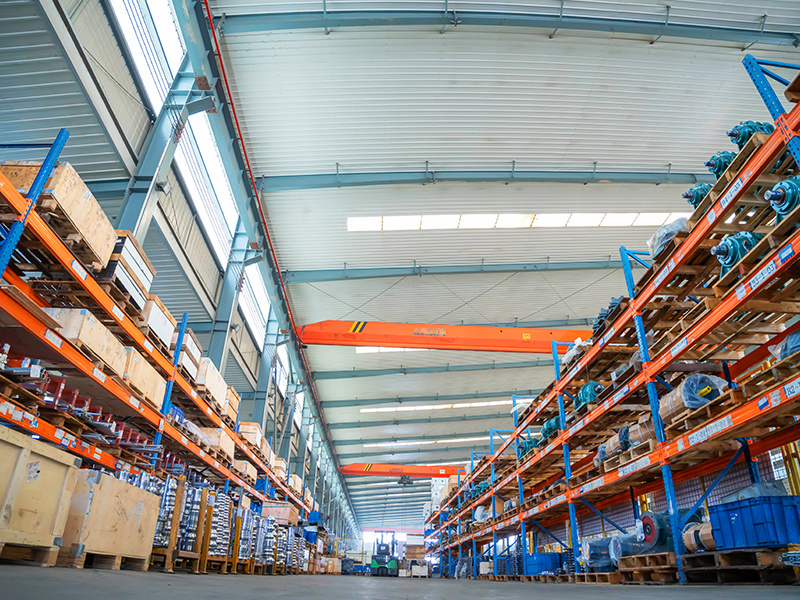Comparative Analysis: Highway Guardrail Roll Forming Machines vs. Traditional Methods

Comparative Analysis: Highway Guardrail Roll Forming Machines vs. Traditional Methods
Introduction to Highway Guardrail Manufacturing
In the realm of **highway safety**, guardrails play a crucial role in protecting drivers and passengers from potential accidents. The manufacturing of these essential components has evolved significantly over the years. Traditionally, various methods were employed to create guardrails, but with the advent of modern technology, **highway guardrail roll forming machines** have emerged as a preferred choice. This article presents a comparative analysis of both methods, highlighting their respective advantages and disadvantages, production processes, and overall impact on the industry.
Understanding Roll Forming Machines
Roll forming is a continuous bending operation where a long strip of metal is gradually shaped into a desired cross-section. **Highway guardrail roll forming machines** use a series of rollers to transform flat metal sheets into guardrails, resulting in a highly efficient production process. This method allows for the rapid creation of uniform, high-quality products that meet stringent safety standards.
The Mechanics of Roll Forming
The process begins with a coil of metal, typically made from galvanized steel, which is fed into the machine. As the coil passes through the rollers, it is shaped into the desired profile. This method not only minimizes waste but also ensures consistency in dimensions. In addition, roll forming machines can produce various guardrail designs, including W-beam and thrie-beam configurations, catering to different safety requirements.
Advantages of Roll Forming Machines
- **Efficiency and Speed:** Roll forming machines can produce guardrails at a much faster rate compared to traditional methods, reducing lead times and increasing output.
- **Material Conservation:** The continuous process generates less scrap material, leading to cost savings and an eco-friendly manufacturing solution.
- **High Precision:** The automated process minimizes human error, resulting in products that adhere to tight tolerances.
- **Versatility:** These machines can be easily adjusted to produce different profiles, allowing manufacturers to meet various customer demands without significant downtime.
The Traditional Methods of Guardrail Manufacturing
Traditionally, guardrails were manufactured using methods such as stamping, welding, and manual fabrication. While these methods have served the industry for many years, they present several limitations that modern roll forming machines effectively address.
The Process of Traditional Manufacturing
In traditional manufacturing, flat sheets of metal are cut, stamped, and welded into guardrail shapes. This process often involves multiple steps, including the following:
1. Cutting raw materials to size.
2. Stamping or bending the metal into the desired shape.
3. Welding components together.
4. Finishing treatments, such as painting or galvanizing.
This multi-step approach can be time-consuming and labor-intensive, leading to increased production costs.
Disadvantages of Traditional Methods
- **Labor-Intensive:** Traditional manufacturing requires skilled labor for various tasks, resulting in higher labor costs and potential human error.
- **Longer Production Times:** The multi-step process can lead to delays in fulfilling orders.
- **Higher Scrap Rates:** Cutting and stamping often result in significant material waste.
- **Limited Design Flexibility:** Once a tool or die is created for a specific shape, altering it for new designs can be costly and time-consuming.
Comparative Analysis: Performance and Cost-Effectiveness
When evaluating the **performance** and **cost-effectiveness** of highway guardrail roll forming machines versus traditional methods, several factors come into play.
Production Capacity and Efficiency
Roll forming machines can produce guardrails at a much higher capacity than traditional methods. For instance, a single roll forming line can output thousands of feet of guardrail per hour, whereas traditional methods may only yield a fraction of that due to their labor-intensive nature. This increased efficiency translates to lower costs per unit and shorter turnaround times for projects.
Quality Control and Consistency
The **quality control** provided by roll forming machines is superior to that of traditional methods. With automated processes, manufacturers can maintain tight tolerances and ensure that each guardrail meets safety regulations without the inconsistencies often found in hand-fabricated products. This consistency not only enhances safety but also boosts customer satisfaction.
Cost Analysis of Manufacturing Methods
Here is a breakdown of the cost elements associated with both methods:
**Roll Forming Machines:**
- Initial investment in machinery can be high but pays off due to reduced labor costs and lower material waste.
- Long-term savings on production costs due to efficiency and speed.
**Traditional Methods:**
- Lower initial investment in tools and equipment.
- Higher operational costs due to labor and material waste, leading to a higher total cost of ownership.
Technological Advancements in Roll Forming
As technology continues to advance, **highway guardrail roll forming machines** are becoming even more sophisticated. Modern systems incorporate features such as:
- **Automated Changeovers:** Allowing for quick adjustments between different guardrail designs without extensive downtime.
- **Real-Time Monitoring and Adjustments:** Ensuring consistent quality and immediate detection of issues during the manufacturing process.
- **Integration with CAD Software:** Facilitating the design and prototyping of new guardrail profiles that can be quickly implemented into the production line.
Environmental Considerations in Manufacturing
In today’s eco-conscious market, the environmental impact of manufacturing processes is a significant consideration. Roll forming machines offer several advantages in this respect:
- **Reduced Waste:** With less scrap generated during production, roll forming is a more sustainable option.
- **Energy Efficiency:** Modern roll forming machines are designed to consume less energy than traditional methods, further reducing their carbon footprint.
Case Studies: Successful Implementation of Roll Forming Machines
Numerous companies have successfully transitioned from traditional guardrail manufacturing methods to roll forming technology. For instance, a leading highway safety manufacturer reported a 30% reduction in production time and a 20% decrease in material costs after implementing roll forming machines in their production line. This shift not only improved their bottom line but also allowed them to meet the growing demand for high-quality guardrails in a timely manner.
FAQs about Highway Guardrail Manufacturing
1. What are the typical materials used in highway guardrail manufacturing?
Highway guardrails are primarily constructed using galvanized steel, which offers durability and resistance to corrosion. Other materials, such as aluminum and composite materials, may also be used for specific applications.
2. How does roll forming compare to stamping in terms of production speed?
Roll forming generally outpaces stamping in production speed, allowing manufacturers to produce guardrails more quickly and efficiently.
3. What safety standards must guardrails meet?
Guardrails must adhere to specific safety standards set by organizations such as the Federal Highway Administration (FHWA) and the American Association of State Highway and Transportation Officials (AASHTO).
4. Can roll forming machines produce custom guardrail designs?
Yes, roll forming machines can be easily adjusted to create custom guardrail designs, making them versatile for various applications.
5. What is the average lifespan of highway guardrails?
The lifespan of highway guardrails varies based on materials and environmental conditions, but they typically last between 10 to 30 years with proper maintenance.
Conclusion
In the comparative analysis of **highway guardrail roll forming machines** versus traditional methods, it is evident that modern roll forming technology offers substantial advantages in terms of efficiency, cost-effectiveness, and quality. As the industry continues to evolve, embracing innovative solutions will be crucial for manufacturers seeking to enhance their production processes and meet the growing demands of highway safety. By transitioning to roll forming machines, companies can not only improve their operational efficiency but also contribute to improved safety on our roads.
Key words:
recommend News
Share



